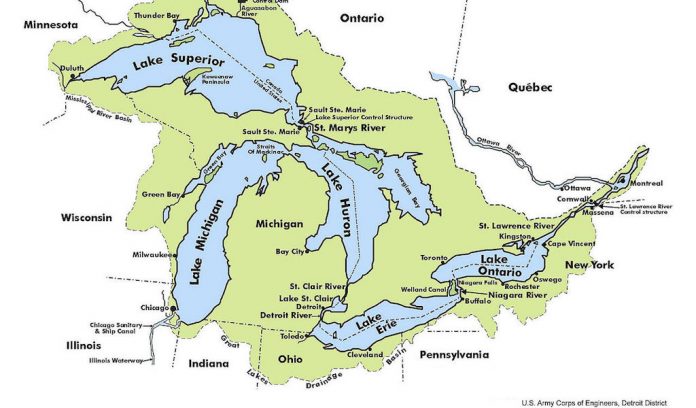Climate action has been something of a tug of war between the last several presidential administrations. That’s partly because there isn’t much existing federal law designed to address climate change, said Cinnamon Carlarne, professor in the Ohio State University Moritz College of Law.
“Climate law in the U.S. is, at best, a patchwork of things,” Carlarne said.
In its first year, the Biden administration has started to lay out its own framework for addressing climate change. But the details of how the U.S. will achieve its climate goals aren’t clear yet, she said.
Carlarne and other experts in climate, law and policy discussed impacts climate change has on the Great Lakes and recent developments in climate law and policy in the University of Toledo College of Law’s recent “Climate Change and the Great Lakes” conference.
“Climate change just brings a lot more uncertainty and issues to the table,” said Kim Channell, climatologist with University of Michigan Great Lakes Integrated Sciences & Assessments, in the virtual conference.
Trends
In general, in the Great Lakes region, climate change has driven warmer temperatures, longer growing seasons and more rain and snowfall, Channell said. Winters, in particular, are warming up, which also means more rain and less snow in many areas.
While a longer growing season can have some benefits, issues with flooding, extreme weather and, in some places, drought spells, tend to outweigh that. In addition to overall rainfall, the region is seeing more extreme rainfall events — basically, more rain coming down all at once. These trends are expected to continue.
Impacts
More extreme rainfall events brings multiple risks, including erosion and challenges for stormwater infrastructure — many city stormwater systems are based on conditions from years ago, and not current conditions, so they can be overwhelmed by more rainfall, Channell said.
It also means more runoff from farmland, which equals more phosphorus in the Great Lakes — a major contributor to harmful algal blooms in places including Lake Erie. Warmer temperatures lead to warmer water, which gives algae more opportunity to feed on nutrient runoff in warm, shallow surface waters.
Finally, changes in temperature and precipitation affect forests and wildlife. Species more suited for colder temperatures are likely to move north. Some won’t be able to adapt or move quickly enough. These factors will lead to less biodiversity in some parts of the Great Lakes region, Channell added.
Policy
To try to address climate issues in the U.S., the Obama administration did a lot of work to create “scaffolding” for federal climate laws, Carlarne said. But since many of the administration’s actions were executive orders, and not things accomplished through legislation, they were easy to repeal.
The Trump administration rolled back a number of Obama-era rules related to environmental regulation and climate, and issued largely less stringent rules. It also showed more support for greenhouse gas-intensive industries targeted by climate and environmental rules, she said.
Now, the Biden administration is taking its own actions — issuing an executive order on addressing climate change domestically and internationally, rejoining the Paris Agreement and offering up a new goal to reduce greenhouse gas emissions by 50-52% by 2030 and laying out new rules on methane emissions for the oil and gas industries, among others.
Recently, in the lead up to the United Nation’s 26th Conference of the Parties on climate change in early November, the administration also released a long-term strategic plan for addressing climate change in the U.S. But while the administration has set goals, it’s not clear exactly how the country will get there.
“Even after reading the long-term strategy, there’s a lot of details to flesh out,” Carlarne said.
Details
While the federal government can take some actions, a lot will need to be accomplished in partnership with state governments, Carlarne said. It will also take cooperation between the private sector and the government. The infrastructure package includes some funding that could help achieve climate goals, but that is still pending in Congress.
And executive orders don’t mean much until they are put into action by legislation or regulation, Carlarne said. So far, the U.S. Environmental Protection Agency is mostly considering proposals for rules to address some of the largest sources of pollution.
The U.S. Supreme Court also recently agreed to hear appeals in a case related to the Obama-era Clean Power Plan, which sought to regulate emissions from existing fossil fuel fired power plants under the Clean Air Act, said Kenneth Kilbert, professor at the University of Toledo College of Law, in the conference.
The plan called for a 32% reduction in emissions nationwide, and required states to submit plans that include improving operating efficiency for plants, shifting from coal to natural gas and shifting from natural gas to renewable energy.
The Supreme Court will be evaluating whether or not the EPA has the authority to regulate off-site measures to reduce power plant emissions — like switching to natural gas or renewable energy. With that case still pending, the EPA will basically have to wait to find out exactly what it has the authority to do, Carlarne said.










